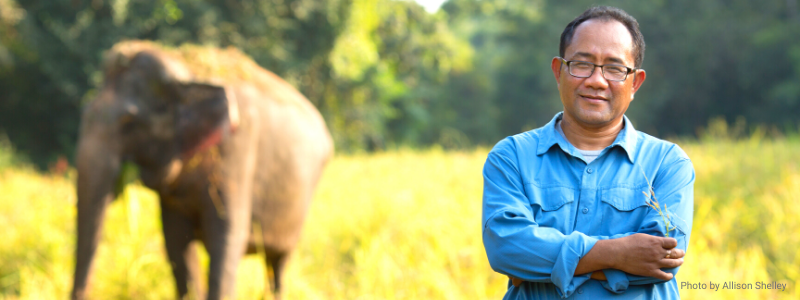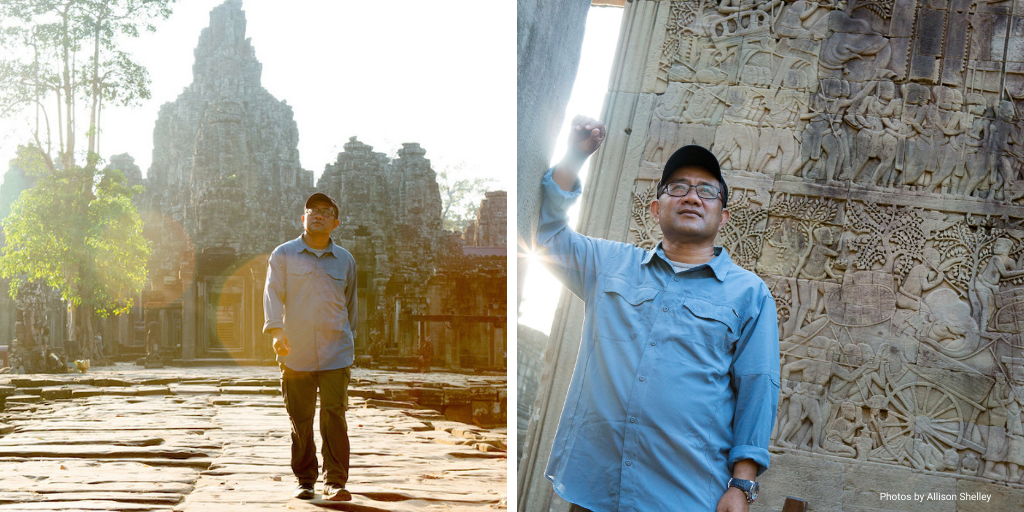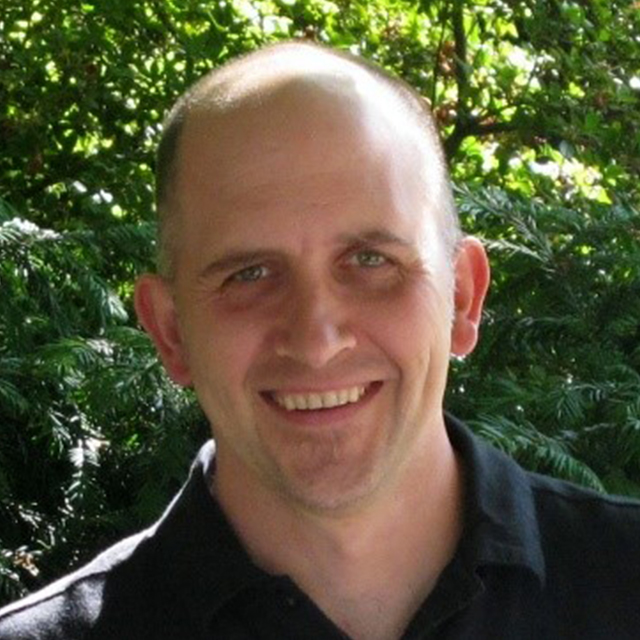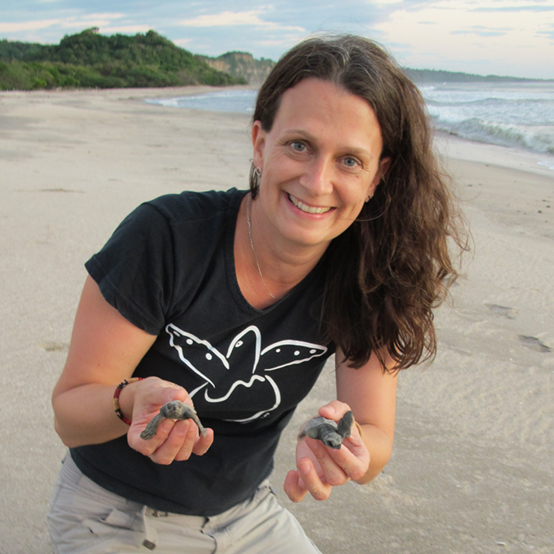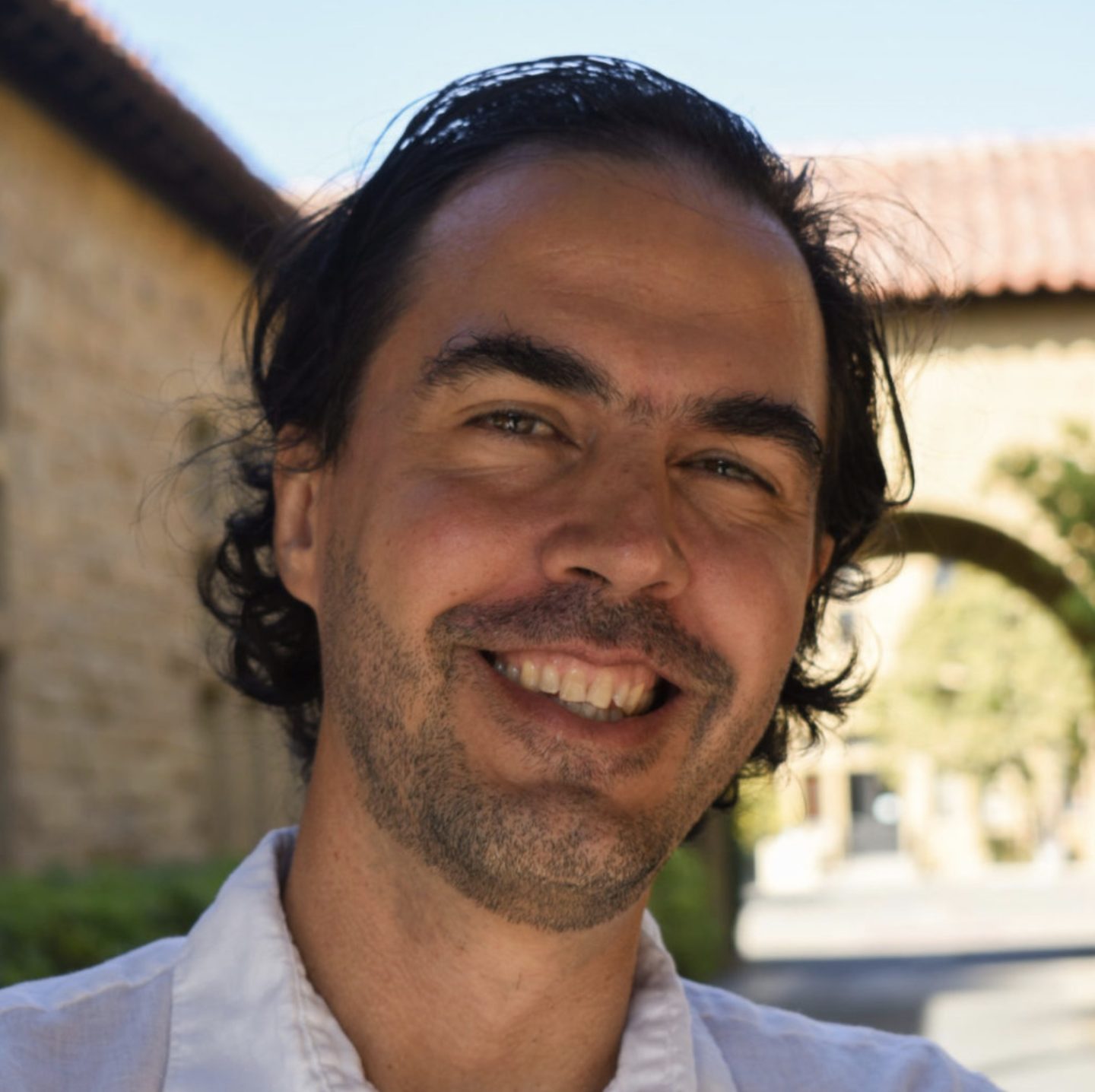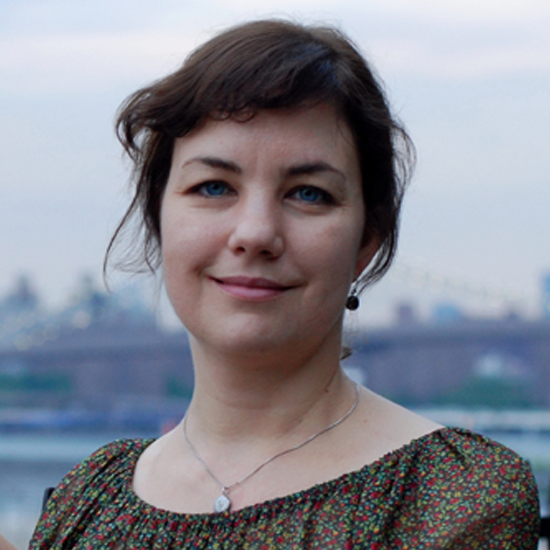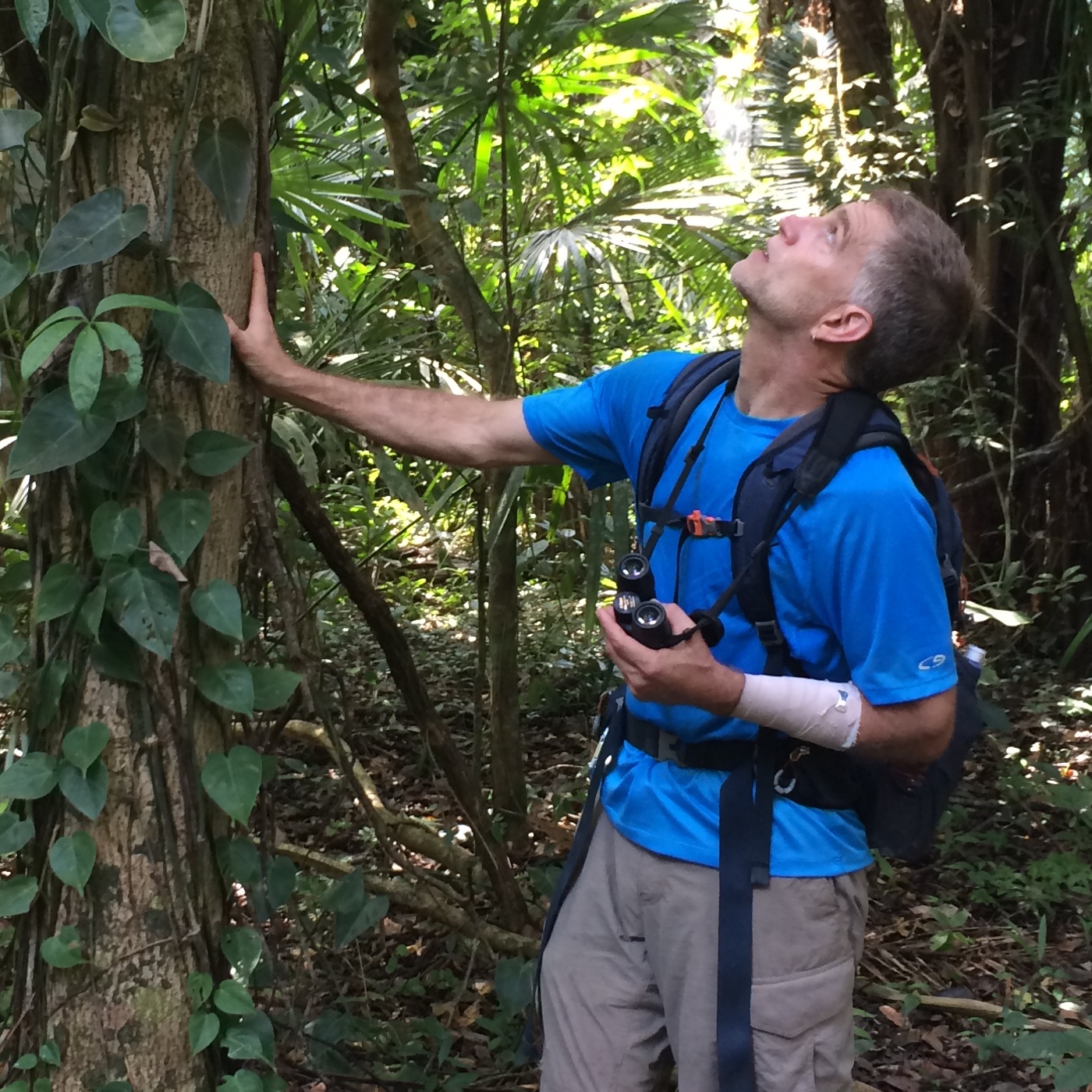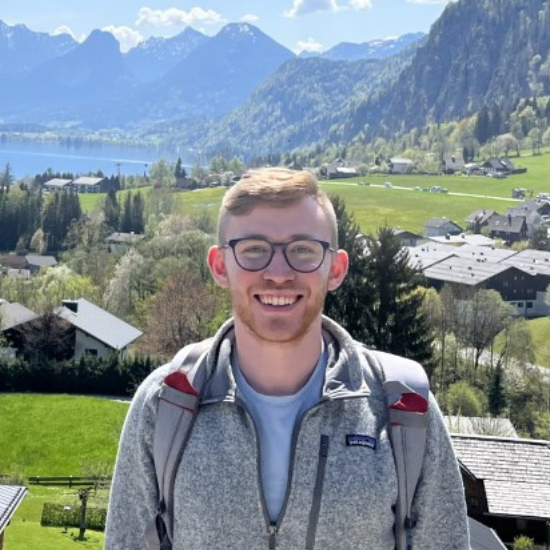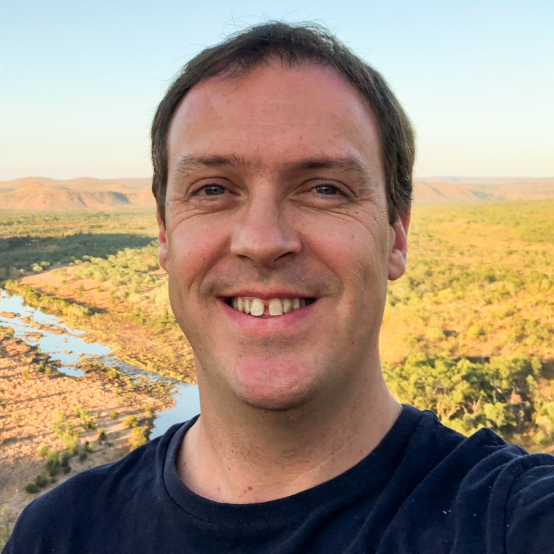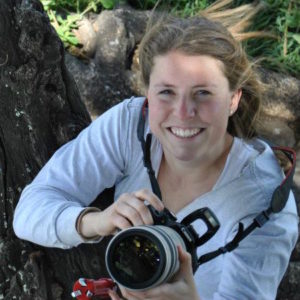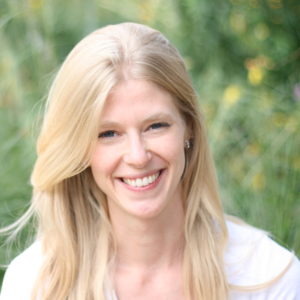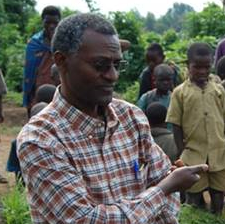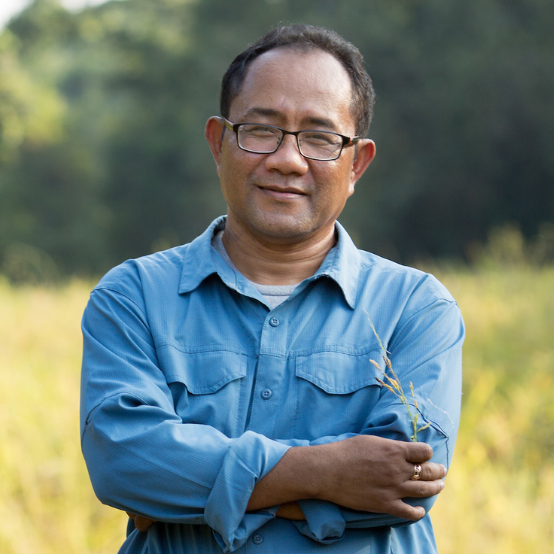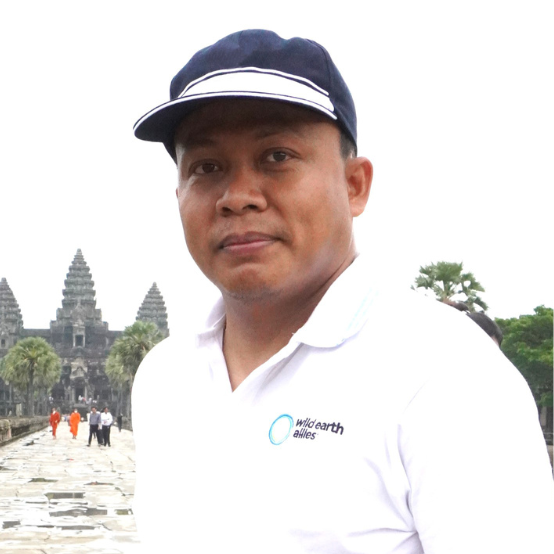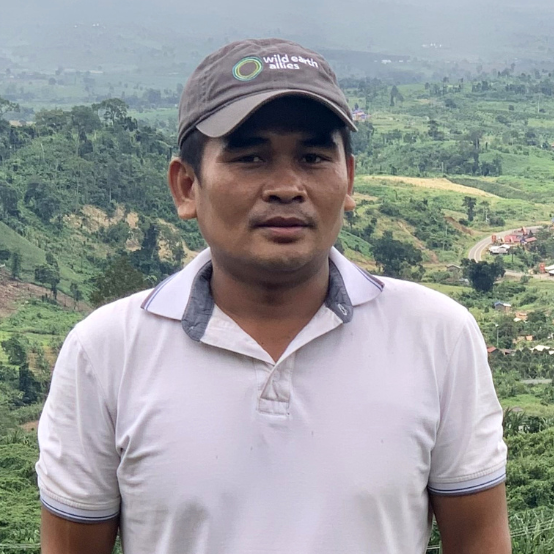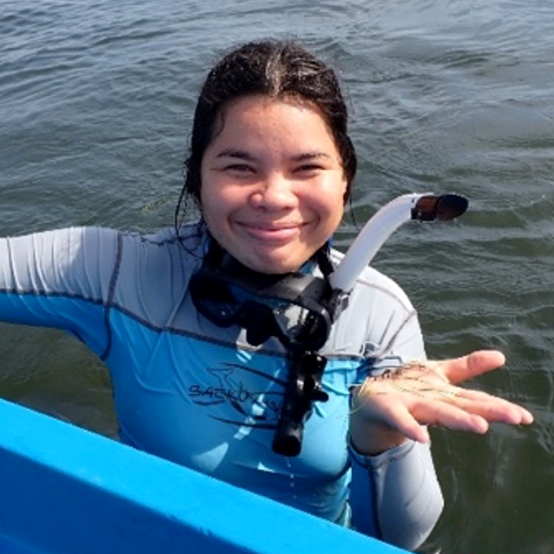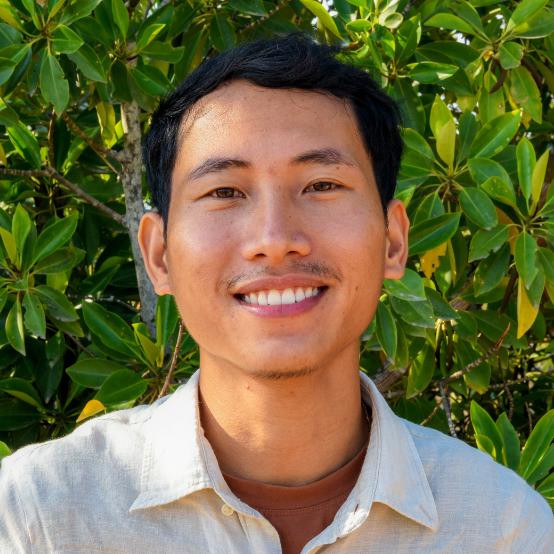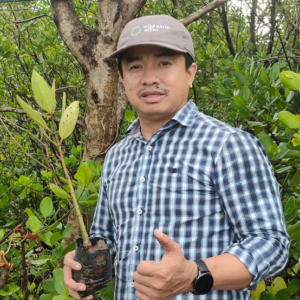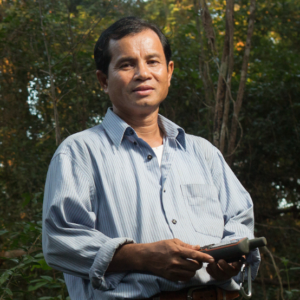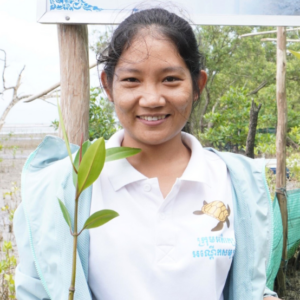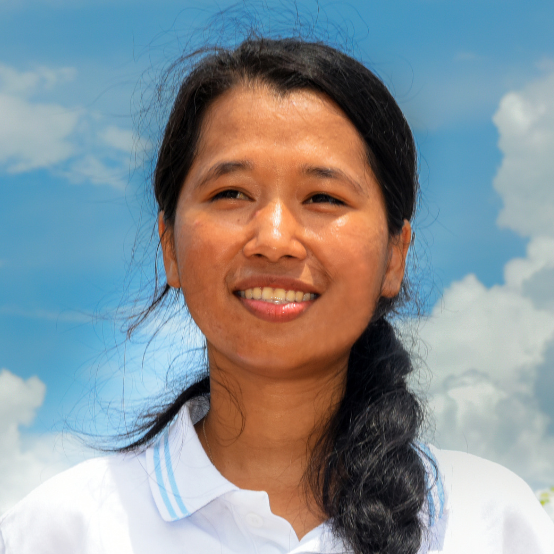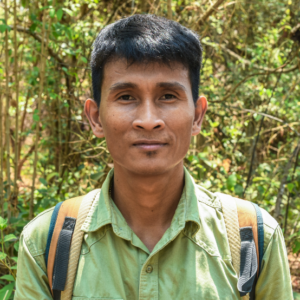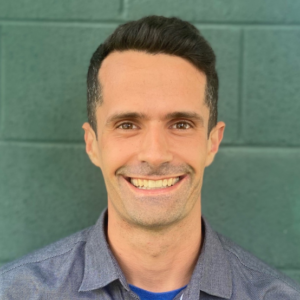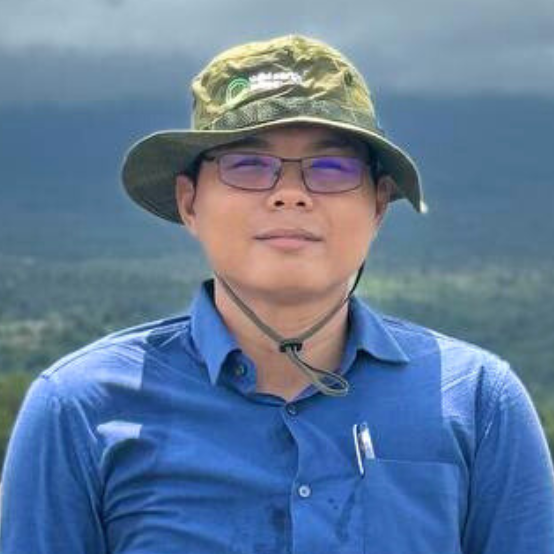Our Voices from the Field series is a behind-the-scenes look into the conservation efforts of our field teams and partners around the world. We believe protecting the planet begins with people and this series highlights talented practitioners and the work we do protecting our natural world, together.
Tuy Sereivathana (Vathana) is internationally recognized for his Asian elephant conservation efforts — he has received the Goldman Environmental Prize (2010), is a National Geographic Explorer (2011), and a member of the Green Asia Forum.
Vathana serves as the Cambodia Program Director for Wild Earth Allies where he leads a team of talented conservationists working on a range of initiatives, including Asian elephant and marine conservation.
He is also the inspiration of our first film, Uncle Elephant. The name of the film refers to Vathana’s nickname and of his childhood dream to work in the forests protecting elephants.
Continuing our Voices from the Field series, we spoke with Vathana about his work and developments in Cambodia and beyond.
At left, Vathana walks through Angkor Wat. At right, a bas-relief carved in the 12th century in Angkor Wat depicts Asian elephants, showcasing their longtime importance in Khmer culture.
What was your childhood like growing up in Cambodia?
I was born in Phnom Penh in 1970 to a well-educated family, but I grew up during the war and the Khmer Rouge chased us out of town. My father led our family to his home village, and we pretended we could not read or write. Life was difficult. The Khmer Rouge eventually separated us, and my brother and I lived in a different camp than my parents. We were lucky to find my parents again after the Khmer Rouge, and we started a farm growing rice, corn and soybeans. We didn’t have money, so we traded rice for two buffalo which we used to plow our farm. My father also climbed palm trees for sugar as a means to survive. I studied at school in the morning and in the afternoon, I took care of our buffalo.
What was your transition from city life to the countryside like?
I became a countryside boy very quickly and forgot about city life. At nine years old, I loved taking care of our buffalo. Many people in the village called me the “buffalo kid” because I walked, swam and rode with my buffalo everyday.
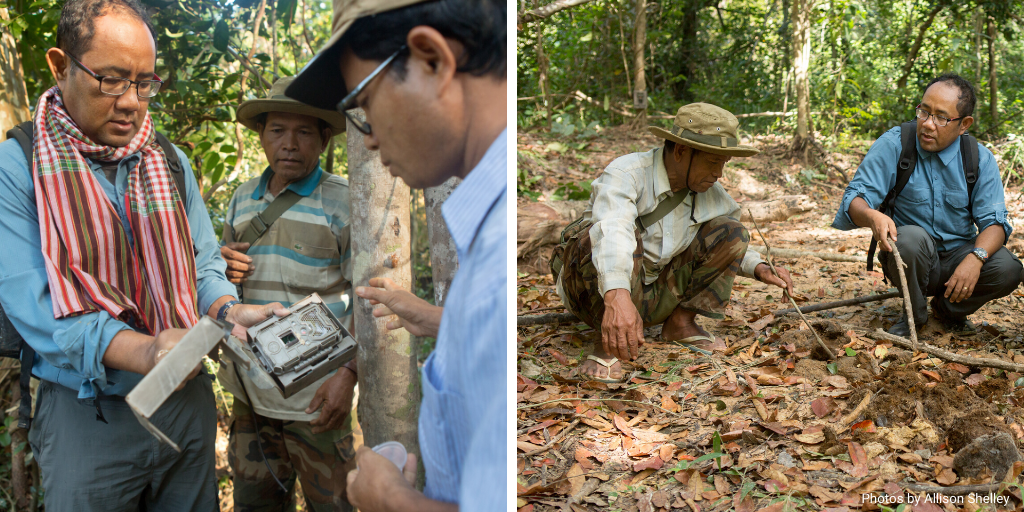 At left, Vathana installs a field camera trap with Field Lead Srey Ben (middle) and Program Coordinator Neang Thy (right). At right, Vathana and Ben inspect Asian elephant dung.
At left, Vathana installs a field camera trap with Field Lead Srey Ben (middle) and Program Coordinator Neang Thy (right). At right, Vathana and Ben inspect Asian elephant dung.
How did your love of wildlife develop as a child?
I loved animals so much, especially my buffalo. My buffalo let me ride it and sometimes I would fall asleep on its back. When it was too hot outside in the afternoon, I would cool the buffalo down with water. I became a professional buffalo caretaker. I used to make my father angry when I would steal his razors to shave the buffalo.
Our lives at that time were very close to nature – I was completely immersed in it. We got our drinking water from lakes, ponds and streams and I knew which plants helped with stomach aches or other medical issues.
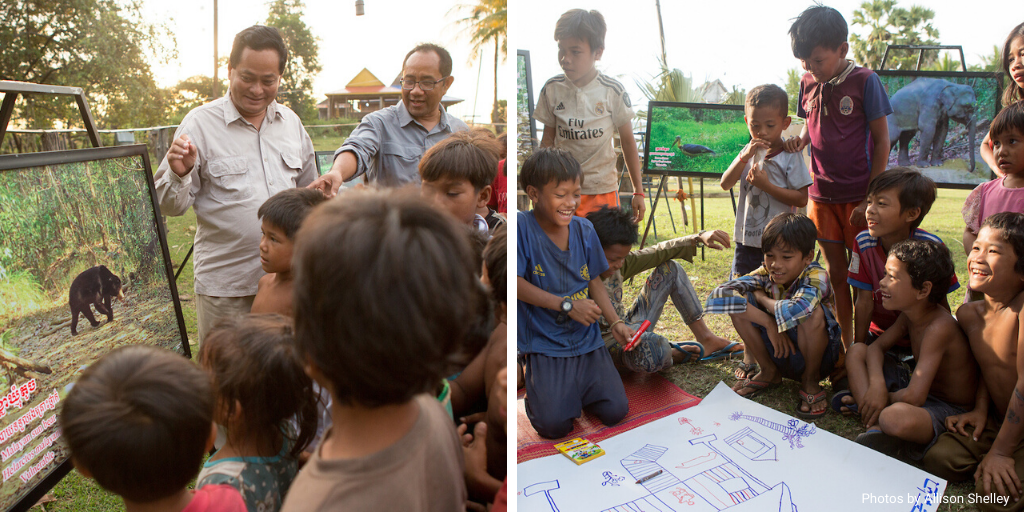
Environmental education is an essential part of Wild Earth Allies Asian elephant conservation efforts. At left, Vathana and Provincial Environmental Department Director Eang Phirong lead a discussion with kids from the village of Siem Bouk.
What is your earliest memory of elephants?
I loved elephants as a child but had only seen photos of them. One day when I was 9 or 10, I returned to the village with my buffalo, and my mom told me I had just missed seeing domestic elephants with two men who were traveling to our village to sell traditional medicines. She said the men had left for a village nearby, but she didn’t allow me to go because it was dark and the trip required crossing a lake and walking through a forest. It would have been dangerous for a kid. But I wanted to see the elephants, so I convinced two of my friends to accompany me.
We used a boat and traveled across the lake, then we needed to walk through the forest. While walking, we realized we didn’t have food for the elephants, but we couldn’t identify plants in the dark so we took everything we could find along the road, including a very smelly vine. We reached the village, greeted the owner of the elephant and asked him if we could feed the elephant. He said yes. But when I threw the vines, the elephant didn’t eat them. The owner explained to me elephants liked rice, bananas and other sweet fruits, and did not like the smell of the vine. I learned a lot that night. He told me how big the forest was near his home in northern Cambodia and that wild elephants lived there in big groups.
When I returned home around midnight, my parents were so angry with me that I went to that village without permission. I apologized but when I went to bed, I couldn’t sleep. I was imagining the area he described with its big forests, mountains and wildlife societies. I wanted to go there so much.
How did your conservation career begin?
I received a government scholarship to study in the Soviet Union and hold an MSc and BSc in Forestry from Belarus Government University of Technology in Minsk City. I returned to Cambodia in 1995 to work in the Forestry Department and in 1998 started to work in Prey Lang Forest.
I became confident with traveling into the deep forest and interacting with the indigenous Kuy community. I began doing what I imagined doing as a small kid, 20 years after I dreamed it.
Did elephants and humans coexist in your village or region as a child? Has that changed from then to present day?
There were not elephants in my village growing up, but there were elephant pictures in the pagodas. Elephants have been important in Khmer culture for millennia. For example, historians estimate as many as 6,000 elephants carried the stones to build Angkor Wat.
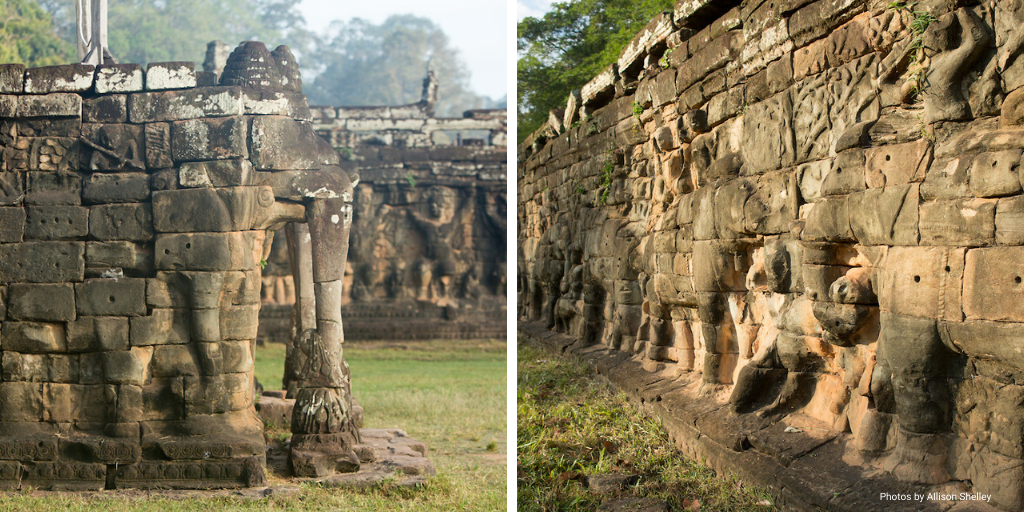 Dating back to the 12th century, elephant depictions can be seen at Angkor Thom within the Angkor temple complex in Siem Reap, Cambodia.
Dating back to the 12th century, elephant depictions can be seen at Angkor Thom within the Angkor temple complex in Siem Reap, Cambodia.
Where did your nickname “Uncle Elephant” come from?
When I started as a field leader in the Cardamom Mountains (southwest Cambodia) on human-elephant conflict, I talked with villagers about tolerating and respecting elephants. People learned I loved elephants so much that they started to call me “Uncle Elephant.”
Why is it important to protect elephants?
When I was a kid, I loved elephants and wanted to protect them. Now that I work in elephant conservation I know about elephant ecology and the important role elephants have in the forest ecosystem. They help spread seeds and unearth minerals that would otherwise be inaccessible. Through field cameras, we have video footage of elephants uncovering minerals by digging and many other animals come to eat the minerals and drink the water.
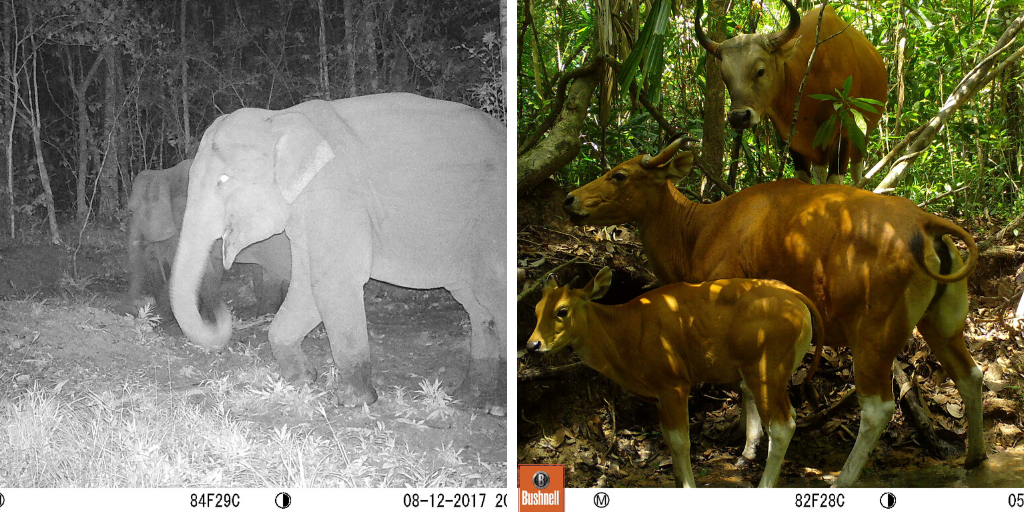 At left, field cameras capture Asian elephants digging for minerals. At right, three banteng are seen eating minerals.
At left, field cameras capture Asian elephants digging for minerals. At right, three banteng are seen eating minerals.
The film “Uncle Elephant” has been accepted to several film festivals. What’s it like to have your story shared with those audiences?
I was a kid in a remote area, born into a good family, and we became very poor and struggled under the Khmer Rouge in the countryside. I love to watch movies, but I never imagined I can play a role in a documentary or video, because I feel shy to perform.
When the filmmaker came to produce Uncle Elephant, I felt happy but also a little shy. I’m proud when I look at the Uncle Elephant film poster – a little shy about watching it, but I am very proud. It shows Prey Lang’s beautiful landscape, elephants and who I am. I did not know this film would be recognized by so many well-known film festivals, so this makes me very surprised and proud.
When I was a kid, I imagined the important Hollywood actors and wondered how they did such work. Now I can imagine this work better. I am so happy my film is with elephants and wildlife in the big forest.
If you haven’t had the opportunity to watch Uncle Elephant, anyone can view the film by visiting www.uncleelephant.org!
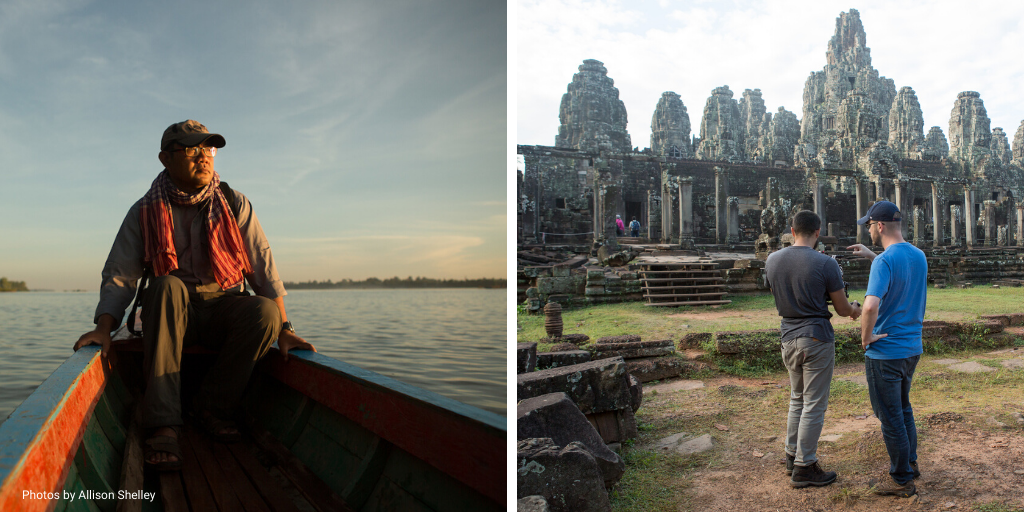 At left, Vathana traveling on boat during filming of Uncle Elephant. At right, Mauricio Ventura and Jon Bougher of Emic Films in conversation during the filming of Uncle Elephant.
At left, Vathana traveling on boat during filming of Uncle Elephant. At right, Mauricio Ventura and Jon Bougher of Emic Films in conversation during the filming of Uncle Elephant.
To learn more about the work Wild Earth Allies is doing in Cambodia, please visit www.wildearthallies.org. And please consider supporting our work. Donate today.


